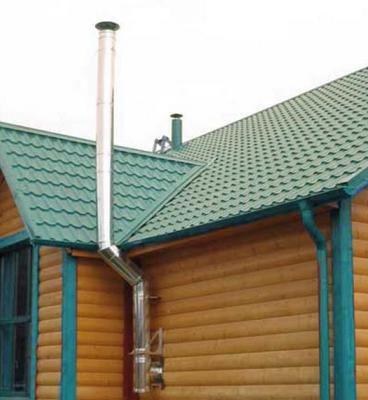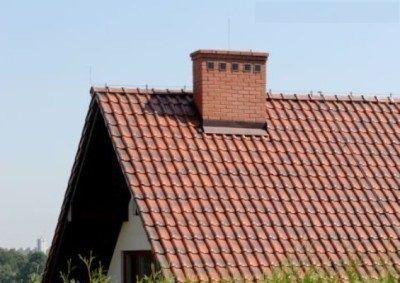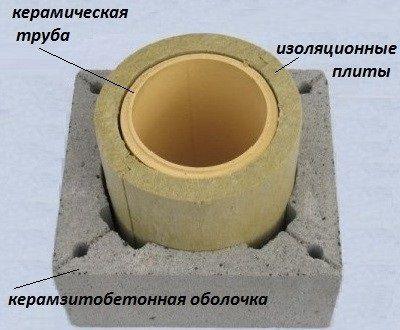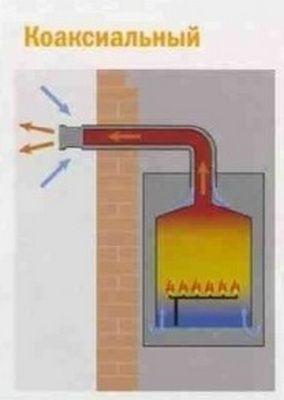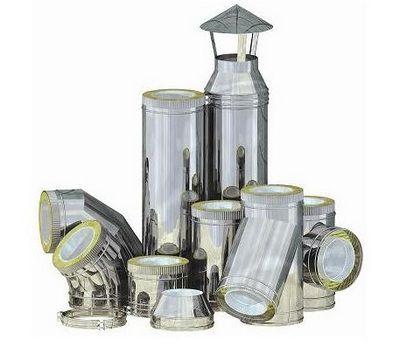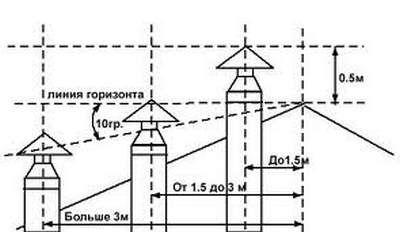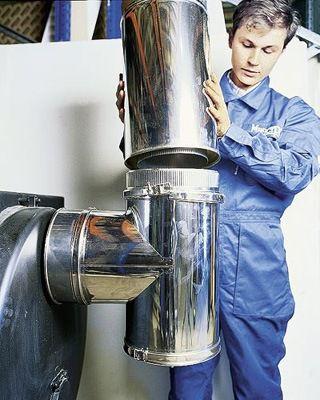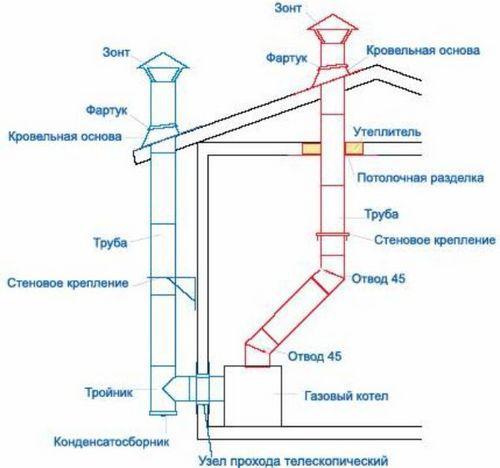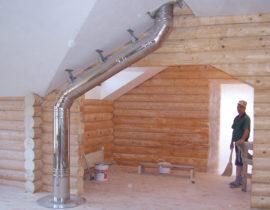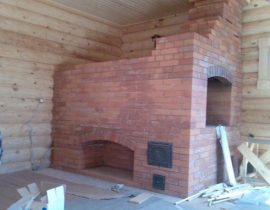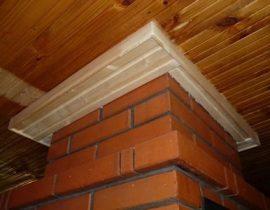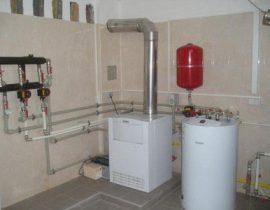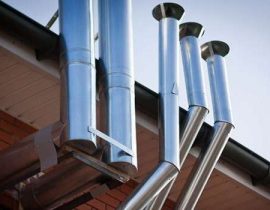One of the most important departments of a gas-fired heating system is a properly arranged chimney. It is no coincidence that gas service workers impose strict but reasonable requirements on gas boiler chimneys. Not only the efficient operation of the gas boiler, but also safety depends on a properly arranged system. residents of the house. When operating gas appliances, there is no visible smoke, as from appliances operating on solid fuel, but this does not mean that there is no possibility of carbon monoxide accumulation. He is dangerous because he negatively affect the health of a person imperceptibly for him.
Owners of private houses must know how the structure works smoke exhaust systems in the house where they live, in order to carry out the correct her operation. And those who are only going to produce gas heater installation, must be aware in advance of what kind there are chimneys and what how they are satisfied in order to decide which choose from them.
Content
Kinds chimney gas boiler systems
To date, several types of chimneys are most often used for heating systems with a gas boiler. Any of them can be built independently, but you will need a diagram for assembly and recommendations from a specialist. We will try to help you in this matter!
brick chimney
Brick pipes have been installed for a long time, more before the appearance of pipes from new materials. But even now, some homeowners have not abandoned their construction, although, frankly, such a chimney is complex in design and laborious in installation. In addition, the construction of a brick chimney takes a lot of time and costs not cheap. It should also be noted that what the brick version is inferior in technical characteristics to more modern systems, since due to its shape and rough inner surface it is often overgrown with soot, what slows down the removal of fuel combustion waste. You don't want to hire a chimney sweep in a couple of years, do you?
Ceramic chimney
Such chimneys have a large number of positive qualities, which are especially well manifested in cases where the installation work will be carried out independently. The design is simple and reliable, easy to install, has a high degree of fire safety and what very important, quite affordable. But, it should be noted that even having so many positive aspects, ceramic chimneys are not very popular.
Requirements for coaxial chimneys of gas boilers
The coaxial chimney differs significantly from all other designs in all respects.
It has a neat compact appearance and an excellent chimney pipe shape — it does not rise to the roof, but exits through the wall.
Despite its small size, the chimney has a high efficiency thanks to its structure and coating on the inner walls. Condensation does not appear inside it, which is very important for the operation of gas-fired heating systems.
Stainless steel sandwich chimney
This model — the most popular and in demand in recent years, as it has a number of unconditional advantages over other options. They have a large number of different transitions, tees and other parts made at different angles, which allows you to assemble structures of any complexity.
Chimneys made of stainless steel three layers. The middle one — it is heat-insulating, which is made of mineral wool. This insulation layer can have different thicknesses. — five to ten centimeters. The choice of its thickness will depend on the place of passage chimney pipes and average winter temperatures of the region where the building is located. It will depend on the correctly selected chimney pipe whether condensate will collect in it, and means and the performance of the entire system as a whole.
The stainless steel chimney has a perfectly flat inner surface, which allows you to easily remove the combustion products of the boiler. In addition, it has a mirror external surface that contributes to presentability general type of system.
Stainless steel chimney elements
Whatever chimney (with the exception of brick) neither established, additional elements will be needed for it, which are selected according to a pre-designed scheme for assembling the system. These include the following details:
- Connecting pipes that connect the pipe to the boiler — adapters.
- Pipes of various lengths.
- Pass pipes.
- Revision tee, having a fitting at the bottom, with the help of which condensate is removed.
- Conical tip.
- Branches.
Requirements for the efficiency and safety of a gas boiler chimney, SNiP standards
Requirements have been developed for the correct design of the chimney SNiP 2.04.05—91 and DBN B.2.5—20—2001, which must be taken into account in order to achieve complete security during system operation. It should be noted that the health and life of the residents of the house, as well as the efficiency of the gas boiler, will depend on the implementation of all the stipulated rules.
Therefore, these rules must be taken with all seriousness, since their non-compliance will lead to troubles with gas facilities, and Maybe and to fines. And all equals have to everything is redone according to established standards.
The requirements for the normal operation of chimneys of gas appliances include the following points:
- Condensate removal using a special moisture collector, which is installed at the bottom of the pipe.
- AT chimney the system must be provided with good traction, it is the key to the efficiency of the device.
- To achieve good traction, it is very important to ensure maximum tightness of the connection of parts when assembling the chimney.
- The chimney must have a vertical shape without ledges. According to the rules allowed slope of 30 degrees, so that the diameter of the section will be maintained.
- A piece of pipe connecting a gas boiler With chimney system, the length of which must be at least half a meter, necessarily must have a vertical section.
- If a room height is about three meters, the total length of the horizontal connecting sections should not exceed room height.
- The distance between the chimney and wall surfaces or in passages, pipes through a wall made of combustible materials must be at least 20 centimeters, made of non-combustible materials — about five centimeters. In the walls or ceilings through which the chimney passes, non-combustible material, such as mineral wool, is laid around the pipe.
- The head of the chimney pipe, passing through the roof, must rise above it by at least half a meter. If the roof has a flat structure, then the head above it is raised to a height of one meter.
On device chimney system is prohibited:
- Installation of fungi and deflectors on the head of the gas boiler pipe, as they inhibit the removal of combustion products, so waste can get into inside premises.
- arrange more than 3 turns on the flue pipes.
- Conduct chimney pipe through any premises where there is no ventilation system.
- Fulfill chimney channels from materials with porous structures.
- Stretch chimney system through living quarters.
The whole structure is assembled according to the instructions and scheme of the manufacturer chimney systems agreed with the controlling organization.
Step-by-step installation of a gas boiler chimney
Installation of the chimney system is as follows:
- Accurate marking of the pipe passage through the ceiling and roof is made — this process must be repeatedly monitored so as not to make mistakes.
- Further holes are made according to the markings for the passage of the pipe.
- Mounted transition adapter that connects to the pipe located on the boiler.
- Then a tee is attached, which has a compartment for collecting moisture, and fixed special bracket.
- The next section of the chimney is joined. If necessary, an element called the "knee" is used.
- If the pipe will be passed through the ceiling, a special pass-through pipe must be included in the chimney kit. The pipe passes through a metal sheet in which it is arranged for her hole a little larger than diametertr truby. Leest prfasten to the ceiling.
- Joints of two pipe sections for reliability are fixed with clamps, they are tightened with bolts.
- The chimney is fixed to the wall on special brackets with a step, about, two meters.
- The cone-shaped tip completes the design.
- The last step is isolation chimney pipes from combustible materials at crossings.
It is impossible not to highlight the nuances of choosing and installing a chimney, depending on its location. It can be installed outside and fixed to the wall (wall), or pass inside the building.
Internal chimney
- If heat should radiate from the chimney to all rooms where it will pass, you do not need to choose a pipe with internal thermal insulation, they insulate her only from the outside.
- It should be taken into account that when passing the chimney inside the house, the rsk prcombustion products escaping into rooms, as well as increasing the fire hazard. Therefore, it is very important to perfectly match the individual parts and reliably fasten them with clamps.
- For installation, a larger number of various additional elements will be required, since the pipe will pass, least through one ceiling and roof.
- We should not forget that if in the future it is necessary to carry out repair work on such a chimney, then this will become a rather problematic task.
Outdoor chimney
- The external version of the chimney requires correctly calculated thermal insulation.
- The advantage is the safety of this heating element.
- Installing an outside chimney is much easier than an inside one.
- In case of need for repair, it can also be easily carried out under any existing conditions.
How to avoid the accumulation of condensate in the chimney of a gas boiler - video lesson
Any part of the heating system should be arranged as carefully as possible, and this should not be treated negligently. Therefore, if there is no experience in this area, it is best to contact a specialist who knows his business, or to a company that installs chimneys.

